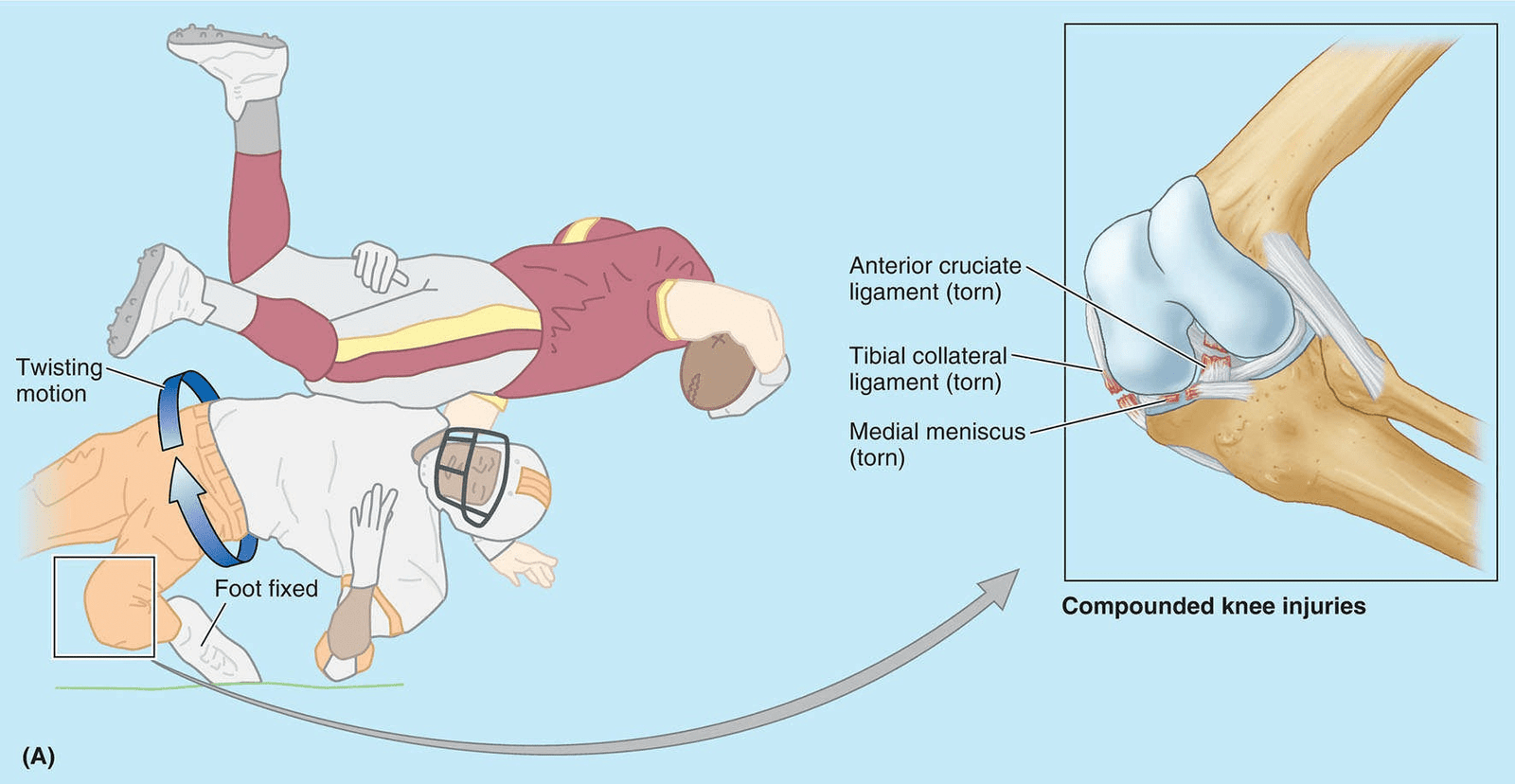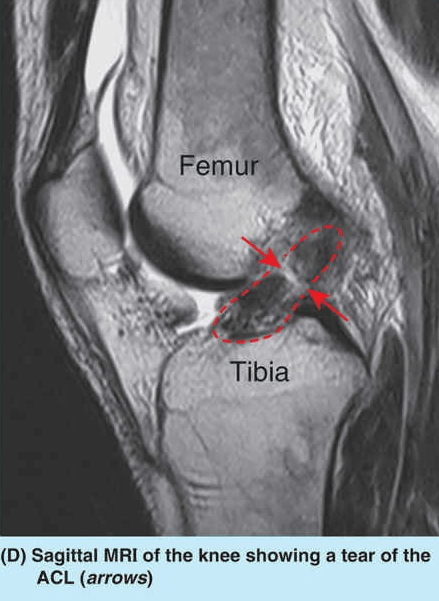Knee Joint Injuries
content of this page
1- Introduction
2- Anatomical Overview
3- Causes
4- Treatment
Introduction
Knee joint injuries are common and can significantly impact mobility, athleticism, and quality of life. As one of the largest and most complex joints in the human body, the knee is vulnerable to a variety of injuries that range from mild sprains to severe ligament tears and fractures. These injuries often result from sudden twists, overextension, direct trauma, or gradual wear and tear, affecting people of all ages and activity levels.

Anatomical Overview
Knee joint injuries are common because the knee is a low-placed, mobile, weight-bearing joint, serving as a fulcrum between two long levers (thigh and leg). Its stability depends almost entirely on its associated ligaments and surrounding muscles. The knee joint is essential for everyday activities such as standing, walking, and climbing stairs. It is also a main joint for sports that involve running, jumping, kicking, and changing directions. To perform these activities, the knee joint must be mobile; however, this mobility makes it susceptible to injuries. The most common knee injury in contact sports is ligament sprain, which occurs when the foot is fixed in the ground. If a force is applied against the knee when the foot cannot move, ligament injuries are likely to occur. The tibial and fibular collateral ligaments (TCL and FCL) are tightly stretched when the leg is extended, normally preventing disruption of the sides of the knee joint.

Causes
Sports and Physical Activities: Participation in sports that involve rapid changes in direction, jumping, or high impact (such as soccer, basketball, skiing, and football) can lead to knee injuries. These activities can cause sudden twisting, pivoting, or direct blows to the knee, resulting in ligament sprains, meniscus tears, or even fractures.
Trauma: Direct trauma to the knee from falls, collisions, or accidents can cause fractures of the bones around the knee joint, as well as ligament or tendon tears. Motor vehicle accidents are a common cause of traumatic knee injuries.
Overuse and Repetitive Stress: Activities that involve repetitive stress on the knee joint, such as running, cycling, or squatting, can lead to overuse injuries. These may include conditions like patellar tendinitis (inflammation of the patellar tendon) or iliotibial band syndrome (ITBS), which cause pain and discomfort around the knee.
Ligament Injuries: Injuries to the ligaments of the knee, such as anterior cruciate ligament (ACL) tears, medial collateral ligament (MCL) sprains, or posterior cruciate ligament (PCL) injuries, often occur due to sudden stops or changes in direction during sports or activities.
Meniscus Tears: The menisci are cartilage structures that act as shock absorbers in the knee joint. Tears can occur due to twisting movements while bearing weight, often during sports or activities that involve pivoting or squatting.
Joint Degeneration: Conditions such as osteoarthritis can cause gradual wear and tear of the knee joint over time, leading to pain, stiffness, and reduced function. This can be exacerbated by factors like aging, obesity, or previous knee injuries.
Improper Biomechanics: Issues with alignment, muscle imbalance, or poor technique during physical activities can place excessive stress on certain structures of the knee, increasing the risk of injury.
Treatment
Rest and Activity Modification: Resting the knee and avoiding activities that aggravate symptoms is often the first step in treatment. This helps reduce inflammation and allows the injured tissues to heal.
Ice Therapy: Applying ice to the knee can help reduce pain and swelling. It’s typically recommended to apply ice for about 15-20 minutes every few hours during the initial stages of injury.
Compression: Wrapping the knee with an elastic bandage or using a compression sleeve helps control swelling and provides support to the joint. It’s important not to wrap too tightly to avoid impairing circulation.
Elevation: Keeping the knee elevated above the level of the heart when lying down can also help reduce swelling and promote fluid drainage from the injured area.
Pain Management: Over-the-counter pain relievers such as ibuprofen (Advil, Motrin) or acetaminophen (Tylenol) may be recommended to alleviate pain and inflammation. In some cases, stronger medications or injections may be prescribed.
Physical Therapy: A structured physical therapy program is often crucial for knee injuries. Physical therapists can prescribe specific exercises to strengthen muscles around the knee, improve flexibility, and enhance overall joint stability. They may also use modalities like ultrasound or electrical stimulation to aid in recovery.
Bracing or Supportive Devices: Depending on the type and severity of the injury, wearing a knee brace or using supportive devices (e.g., crutches) may be necessary to stabilize the knee and prevent further damage during activities.
Injection Therapies: In cases of persistent inflammation or pain, corticosteroid injections or viscosupplementation (hyaluronic acid injections) may be considered to provide temporary relief and promote healing.
Surgical Intervention: For certain injuries such as severe ligament tears (e.g., ACL tears), complex fractures, or irreparable damage to cartilage (e.g., meniscus tears), surgical repair or reconstruction may be necessary. This may involve procedures like ACL reconstruction, meniscus repair or removal, or knee arthroscopy.
Rehabilitation and Return to Activity: Gradual rehabilitation under the guidance of healthcare professionals is crucial to ensure a safe return to normal activities or sports. This includes progressive strengthening exercises, functional training, and education on injury prevention techniques.